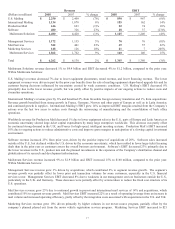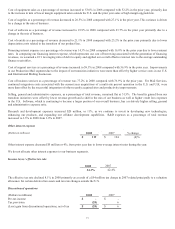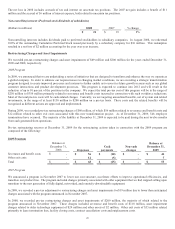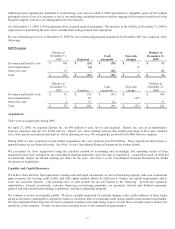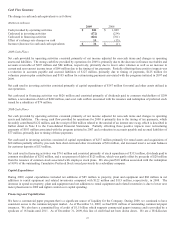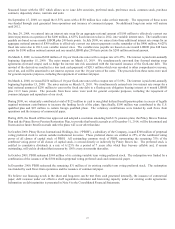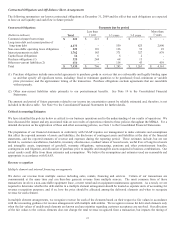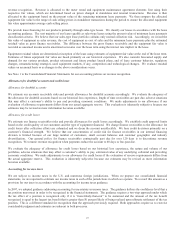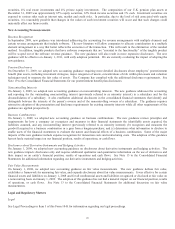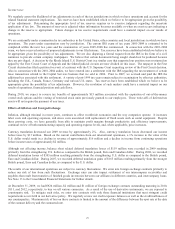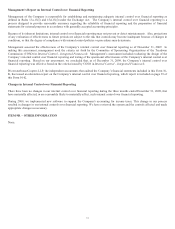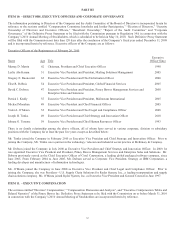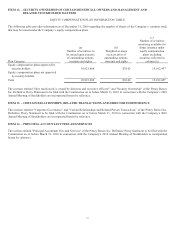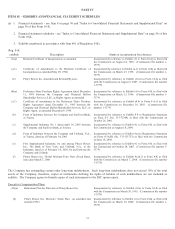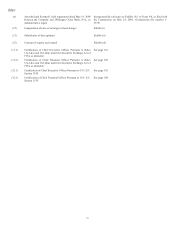Pitney Bowes 2009 Annual Report Download - page 44
Download and view the complete annual report
Please find page 44 of the 2009 Pitney Bowes annual report below. You can navigate through the pages in the report by either clicking on the pages listed below, or by using the keyword search tool below to find specific information within the annual report.26
We regularly assess the likelihood of tax adjustments in each of the tax jurisdictions in which we operate and account for the related
financial statement implications. We have established tax reserves which we believe to be appropriate given the possibility of tax
adjustments. Determining the appropriate level of tax reserves requires us to exercise judgment regarding the uncertain application of
tax law. We adjust the amount of reserves when information becomes available or when an event occurs indicating a change in the
reserve is appropriate. Future changes in tax reserve requirements could have a material impact on our results of operations.
Based on our 2009 income from continuing operations before income taxes, a 1% change in our effective tax rate would impact
income from continuing operations by approximately $7 million.
Goodwill and long-lived assets
Useful lives of long-lived assets
We depreciate property, plant and equipment and rental property and equipment principally using the straight-line method over the
estimated useful lives: machinery and equipment principally 3 to 15 years and buildings up to 50 years. We amortize properties leased
under capital leases on a straight-line basis over the primary lease terms. We amortize capitalized costs related to internally developed
software using the straight-line method over the estimated useful life, which is principally 3 to 10 years. Intangible assets with finite
lives are amortized over their estimated useful lives, which are principally 4 to 15 years, using the straight-line method or an
accelerated attrition method. Our estimates of useful lives could be affected by changes in regulatory provisions, technology or
business plans.
Impairment review
We evaluate the recoverability and, if necessary, the fair value of our long-lived assets, including intangible assets, on an annual basis
or as circumstances warrant. We derive the cash flow estimates that are incorporated into the analysis from our historical experience
and our future long-term business plans and, if necessary, apply an appropriate discount rate to assist in the determination of its fair
value. In addition, we used quoted market prices when available and appraisals as appropriate to assist in the determination of fair
value.
Goodwill is tested annually for impairment, or sooner when circumstances indicate an impairment may exist at the reporting unit
level. Our goodwill impairment review requires judgment, including the identification of reporting units, assigning assets and
liabilities to reporting units, assigning goodwill to reporting units and determining the fair value of each reporting unit. Significant
judgments required to estimate the fair value of reporting units include estimating future cash flows, determining appropriate discount
rates and other assumptions. We use a combination of various techniques, including the present value of future cash flows, earnings
multiples of competitors and multiples from sales of like businesses, to determine the fair value of our reporting units. We derive the
cash flow estimates from our historical experience and our future long-term business plans and apply an appropriate discount rate.
Changes in the estimates and assumptions incorporated into the long-lived asset and goodwill assessments could materially affect the
determination of fair value and/or goodwill impairment for each reporting unit. For 2009, based upon our impairment reviews for
goodwill and long-lived assets, where appropriate, no impairments were identified.
During the review of our 2009 annual goodwill impairment test, the calculated fair values for all of our reporting units were
considered substantially in excess of the respective reporting unit's carrying value, with the exception of one reporting unit. This
reporting unit, which represents the international operations of our Management Services segment, had a calculated fair value 14% in
excess of its carrying value. At December 31, 2009, the carrying value of this reporting unit included an allocation of goodwill of
$136 million. The calculated fair value of each of our reporting units was based on a combination of inputs and assumptions. These
inputs and assumptions include projections of future cash flows, discount rates, growth rates and applicable earnings multiples of
competitors.
See Note 14 to the Consolidated Financial Statements for further details on our restructuring charges and asset impairments recorded
in 2009 and 2008. We believe that we have no unrecorded asset impairments at December 31, 2009. However, future events and
circumstances, some of which are described below, may result in an impairment charge:
xChanges in postal regulations governing the types of meters allowable for use.
xNew technological developments that provide significantly enhanced benefits over current technology.
xSignificant ongoing negative economic or industry trends.
xChanges in our business strategy that alters the expected usage of the related assets.
xFuture economic results that are below our expectations used in the current assessments.



